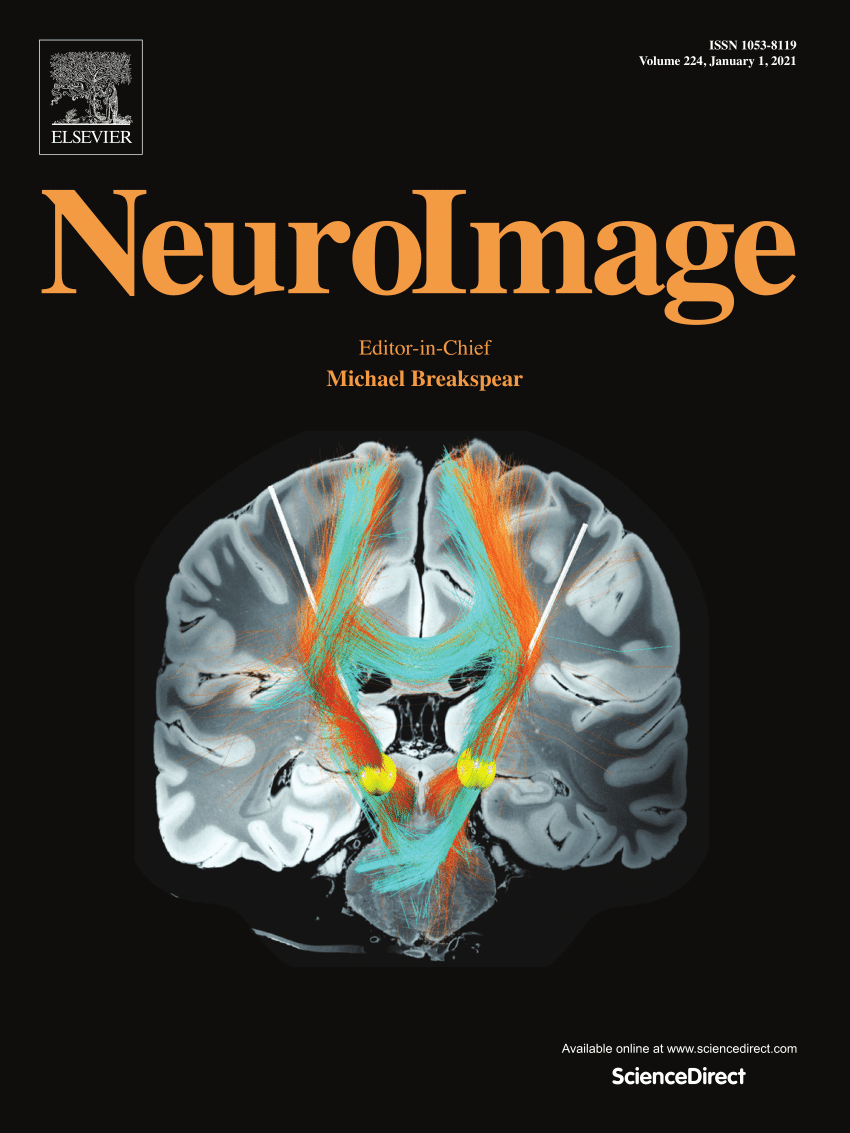Ultrafast complex-valued 4D fMRI reveals sleep-induced brain respiratory pulsation changes in both magnitude and phase signals
IF 4.7
2区 医学
Q1 NEUROIMAGING
引用次数: 0
Abstract
Physiological brain pulsations play a critical role in sleep physiology, but their underlying mechanisms remain poorly understood. To study these pulsations more deeply, we employed ultrafast magnetic resonance encephalography (MREG) to capture complex-valued 4D fMRI brain data at a critical 10 Hz sampling rate in healthy volunteers during wakefulness and sleep. We compared the phase and magnitude components of the MREG signal, as the phase component is known to be particularly sensitive to subtle flow and susceptibility changes, offering insights beyond magnitude-only analysis. This approach enabled whole-brain mapping of the amplitudes of all three physiological pulsations - very low frequency (VLF), cardiac, and respiratory - using an extended amplitude of low frequency fluctuation (ALFF) method. We identified significant increases in respiratory amplitudes during sleep compared to wakefulness in both phase and magnitude signals, while the VLF and cardiac phase amplitudes did not show significant differences. Phase respiration map showed increase especially in default mode network regions, while additional patterns were observed in the cerebellum, ventricles, cerebral aqueduct, and subarachnoid cisterns. In contrast, the magnitude maps showed increased amplitudes more widespread across the cerebrum. These findings highlight the complementary nature of phase and magnitude data in fMRI and suggest that combining these signals provides a more comprehensive understanding of brain physiological dynamics during sleep than conventional magnitude-only analyses.
超快复合价值4D功能磁共振成像显示睡眠引起的脑呼吸脉动的幅度和相位信号的变化。
生理性脑搏动在睡眠生理学中起着至关重要的作用,但其潜在机制仍然知之甚少。为了更深入地研究这些脉动,我们使用超快磁共振脑电图(MREG)以10 Hz的临界采样率捕获健康志愿者清醒和睡眠时的复杂值4D fMRI大脑数据。我们比较了MREG信号的相位和幅度分量,因为众所周知,相位分量对细微的流动和磁化率变化特别敏感,提供了超出仅限幅度分析的见解。这种方法可以使用扩展的低频波动幅度(ALFF)方法,对所有三种生理脉动——甚低频(VLF)、心脏脉动和呼吸脉动——的幅度进行全脑测绘。我们发现睡眠期间呼吸波幅在相位和幅度信号上都比清醒时显著增加,而VLF和心脏相位波幅没有显示出显著差异。相呼吸图在小脑、脑室、脑导水管和蛛网膜下腔池中均有增加。相比之下,震级图显示增加的振幅在整个大脑中更为广泛。这些发现强调了功能磁共振成像中相和幅度数据的互补性,并表明结合这些信号可以比传统的仅进行幅度分析更全面地了解睡眠期间的大脑生理动态。
本文章由计算机程序翻译,如有差异,请以英文原文为准。
求助全文
约1分钟内获得全文
求助全文
来源期刊

NeuroImage
医学-核医学
CiteScore
11.30
自引率
10.50%
发文量
809
审稿时长
63 days
期刊介绍:
NeuroImage, a Journal of Brain Function provides a vehicle for communicating important advances in acquiring, analyzing, and modelling neuroimaging data and in applying these techniques to the study of structure-function and brain-behavior relationships. Though the emphasis is on the macroscopic level of human brain organization, meso-and microscopic neuroimaging across all species will be considered if informative for understanding the aforementioned relationships.
 求助内容:
求助内容: 应助结果提醒方式:
应助结果提醒方式:


